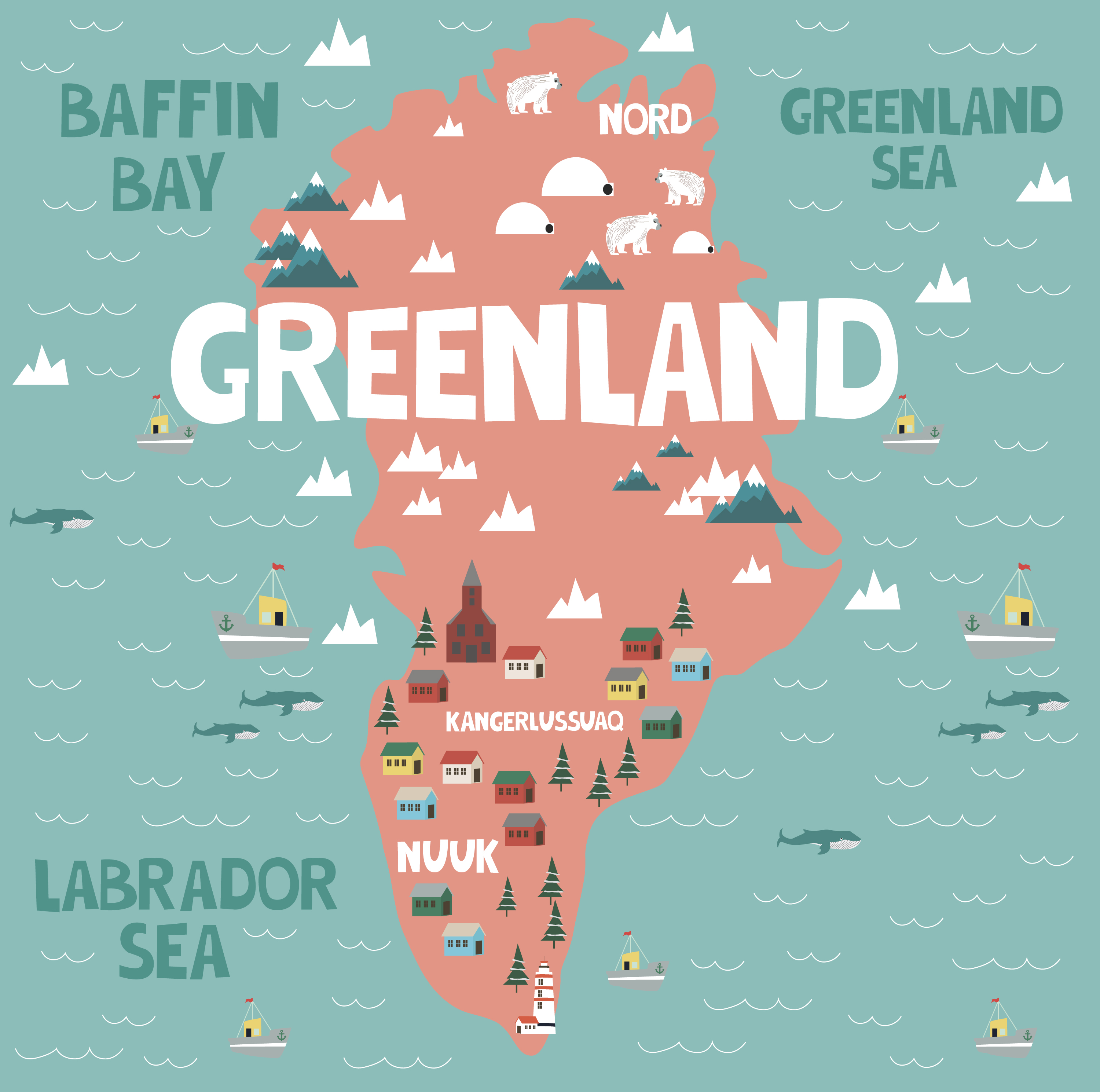
By our multi-lingual friend Brian Loo Soon Hua, a.k.a. uTalk’s Language Guru.
“No Smoking” signs in Nuuk, Greenland are often in three languages: Greenlandic (Pujortarfigeqqusaanngitsoq), Danish (Røgfrit Område– literally “Smoke-free Area”) and English (No Smoking). Notice anything special about the Greenlandic version?
Greenlandic, like several other indigenous languages in North and South America, allows the formation of very long words by stringing together roots (the main idea of the word, like “child”, “play” or “eat”) with various suffixes. A simple, casual word used in conversation might be several syllables long and could be equivalent to an entire sentence in English. For example, “They say that it is good”, is “pitsaanirarpaat” in Greenlandic. “There is no one at home” is “angirlasimasuqanngilaq”! “She is good at singing” is “erinarsullaqqippoq”!
Does that mean that Greenlandic is incredibly difficult to learn? Well, yes and no. This is because among other things, the grammar is very regular and highly systematic. Once the learner becomes familiar with a language rule, he or she can be confident that this rule will be strictly followed in speech and in writing with very few exceptions. Another plus, compared to European languages like English and French, the Greenlandic alphabet and writing system are completely regular and even beginners can effortlessly read long words that they have never encountered before.
Greenlandic has however, a few sounds that English-speakers would find exotic, such as the letter “q” which represents a uvularstop, rather like a “k” made at the back of the throat. This sound is common in Standard Arabic, for example, and is the first sound in the word “Qatar”. The other one that might pose difficulties (unless you happen to know Welsh), is the “ll” sound. As in Welsh, the double-L in Greenlandic is a gentle hissing sound made by placing one’s tongue in the position to pronounce an L, but then allowing the breath to blow out from the sides of the tongue. It is found in the word “illu” meaning “house”.
One of the most common suffixes is –mik. It is used in introducing oneself, “Brian-mik ateqarpunga” (“My name is Brian” or literally, “I have a name, specifically Brian”). It can be used to indicate an instrument or a tool, such as in the word “savimmik” (“with a knife”). It could also be used as a light command, tacked to the end of a noun to request it: “Imermik!”or “Give me water!”. Lastly it appears as a suffix in the word “kaffemik”, an important Greenlandic tradition to celebrate births, birthdays, graduations and other major celebrations. The family prepares a lavish spread of cakes and sweets and even entire meals complete with fish, seal, reindeer, whale and other Arctic foods. There is always coffee and cake in large quantities. Many guests will be invited, and a kaffemikis an occasion for them to mingle, chat, eat, drink and enjoy themselves.
Finally, there are also quite a few Danish loanwords in common use in Greenlandic. For example, “good morning” is “kumoorn” from the Danish “god morgen”. “Hello” is “kutaa” (from “god dag”) Good night” is “kunaat” (from “god nat”) and “goodbye” is often simply “baj” or “baaj”.
With that, we leave you with this wise word in Greenlandic: “Silagissiartuaarusaarnialerunarpoq” meaning, “The weather will slowly and gradually become good again”.
I was so excited to come across your website. I lived in Greenland and Denmark for six years in the 1980’s. In only four months, I became fluent in Danish at K.I.S.S., Koebenhavns Intensive Sprog Skole in Copenhagen. I began studying Greenlandic, taught in Danish in Nuuk, Greenland’s capital, shortly thereafter. After five years of sporadic study, I passed a college-level two-day, oral and written exam in Groenlandsk som fremmedsprog (Greenlandic as a foreign language). I only got a C, but I was more proud of that than countless A’s I’d earned in many years of academia. Over 30 years later, I’ve been despairing of losing it, due to lack of practice, which only occurs when Greenlandic friends come to visit. I’ve already noticed your mentioning of the accompanying mode (indicated by “-mik”), with which I always had difficulty. I am hoping to master it better with uTalk. There are other languages I’d like to improve and/or learn, using uTalk, including Yiddish and Hebrew. I am hoping that subscribing to uTalk gives unlimited access to all the languages you offer, right?
If you subscribe in-app, then you get a subscription to all languages, yes; otherwise, we sell subscriptions on our site for individual languages. Amazing that you’ve worked so hard at Greenlandic; we hope you manage to reactivate it!